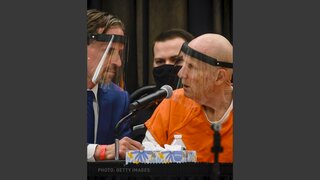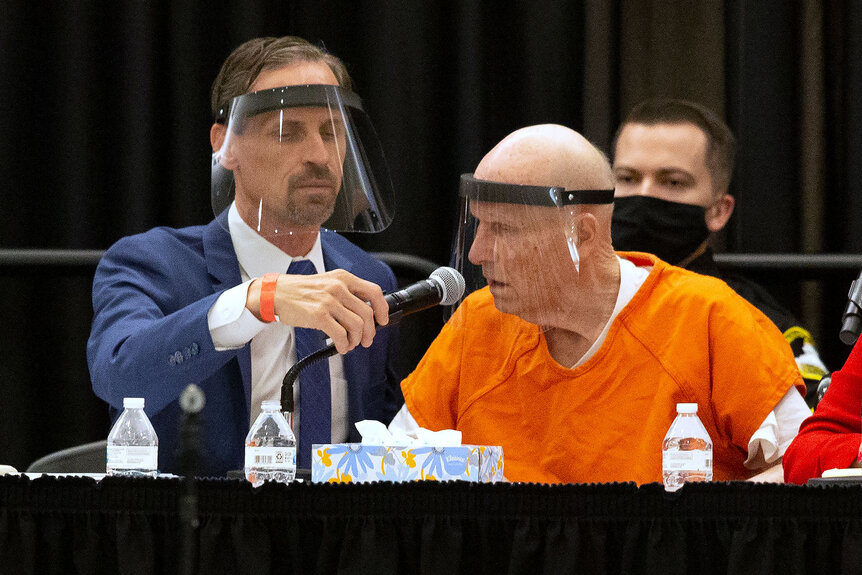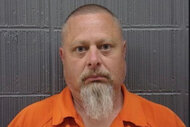Create a free profile to get unlimited access to exclusive videos, breaking news, sweepstakes, and more!
‘We Got The Right Ending’: Genetic Genealogist Who Helped Put Golden State Killer Away Reflects On His Guilty Plea
Barbara Rae Venter used crime scene DNA to determine the most likely suspect in a series of murders and rapes that had baffled investigators for decades, pointing authorities in the direction of Joseph DeAngelo.

As the Golden State Killer sat feebly in his chair admitting to being one of the country’s most prolific serial killers, the genetic genealogist who helped catch him was pleased the case that had baffled investigators for decades had finally ended.
Joseph DeAngelo, 74, pleaded guilty to 13 counts of first-degree murder—also admitting to more than 60 uncharged offenses including brutal rapes—during a lengthy hearing Monday, finally bringing justice to his staggering number of victims and their families.
“To me, it was really wonderful that we’re taking him from being just a suspect sitting in jail to a convicted killer and rapist because up until that point, you know, he could have died in prison,” Barbara Rae Venter, the genetic genealogist who used DNA databases and family trees to identify DeAngelo as the most probable suspect, told Oxygen.com. “We got the right ending.”
Venter called DeAngelo’s conviction “fabulous,” but said hearing the harrowing details of the crimes, painstakingly presented in court, had been difficult.
“Sitting there, listening hour after hour to the details of this sadistic, just grotesque behavior, I’ll tell you, I can’t imagine what it was like for the victims. Just for me, it was really emotionally exhausting,” she said.
DeAngelo’s arrest in April 2018 brought the use of investigative genetic genealogy into the spotlight and highlighted the power the tool can have in cracking cases that have been cold for decades.
To date, Venter estimated investigative genetic genealogy has helped solve more than 200 cases. She’s helped solve about 30 herself, she said.
“I think the really big thing is that in almost all the cases, at least those that I have worked on, the person that we end up identifying was never on anybody’s radar,” she said. “They were somebody that without any investigative genetic genealogy, they would have completely gotten away with it.”
In the Golden State Killer’s case, Venter and other investigators had spent months building out a potential family tree for the killer, according to The New York Times.
Investigators got the break in the case they needed, Venter told Oxygen.com, after using target testing, a strategy that relies on analyzing data from individuals who consensually agree to do a DNA test.
One woman who agreed to the test turned out to be second cousin to the killer, based on DNA left behind at the crime scenes.
Venter got the call from FBI lawyer Steve Kramer that the woman’s DNA had been a match at about 10 p.m. on a Friday night, she recalled.
She spent the next hours poring through family trees and public records to try to identify the most likely suspect.
“It actually is incredibly addictive and I’m forever pulling all-nighters because I’ll be hot on the trail and I know I can’t sleep so I stay up and keep working,” she said.
Venter she was able to determine that the woman also had “an X-chromosome” match with the killer. Since men only have one X-chromosome that they receive from their mother, she knew that the killer was connected to the woman through the maternal line.
Venter was able to reduce the men on her list of possible suspects to just six men, including DeAngelo and his brother.
Then, using a technique she had available through GEDmatch, a family ancestry DNA website, she was able to determine that the killer mostly likely had blue eyes.
“So, at that point, we had our six men and pulled the California DMV records on our six guys and only one of them had blue eyes and that was Joseph DeAngelo,” she said.
She sent investigators an email with the man she believed was the Golden State Killer and then waited as investigators put DeAngelo under surveillance and found a way to collect his DNA to confirm the match.
“I actually didn’t find out that I had been right until the day after the arrest, when they called me and said that he’d been arrested the day before,” she said.
Venter, a retired attorney, initially saw her interest in familial history and genetic genealogy as a hobby.
She became an expert after she wanted to be able to help a newfound cousin find his biological father, according to The New York Times.
She took a class from the website DNAAdoption.org on how to use DNA matches, public records and family trees and soon became hooked. She started teaching the course herself and helping people who had been adopted find their biological family members.
It wasn’t long before Venter agreed to help a California detective try to determine the identity of a woman who discovered she had been raised by a man who wasn’t her father until she was five years old. Investigators later linked the man, Terry Rasmussen, to the Allenstown Four murders in Allenstown, New Hampshire after he was arrested in California for killing his common law wife Eun Soon Jun. Through geneaology, Venter was able to help the woman identify her biological mother.
Paul Holes, a now-retired investigator with the Contra Costa District Attorney’s office who also hosts the Oxygen series “The DNA of Murder with Paul Holes,” heard about Venter’s help with the case and reached out to her to ask if she would try to help solve a series of rapes and murders in the 1970s and 1980s, now linked conclusively to DeAngelo.
She agreed and DeAngelo was soon behind bars after evading authorities for decades. But her involvement in criminal investigations hasn't ended there.
She continues to help law enforcement agencies try to solve difficult criminal cases and acknowledges that what began as a hobby has become more of a second career.
“Right now, I think I have 58 active cases, so, yeah, I guess I am really not retired anymore,” she said.



























